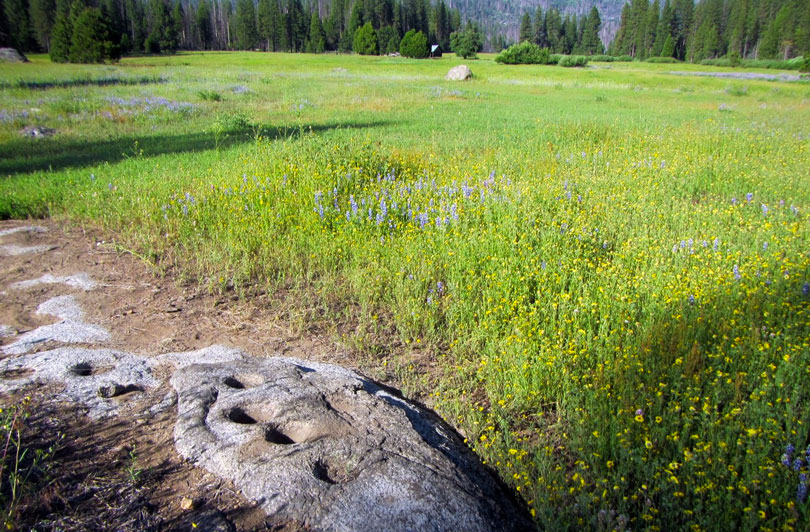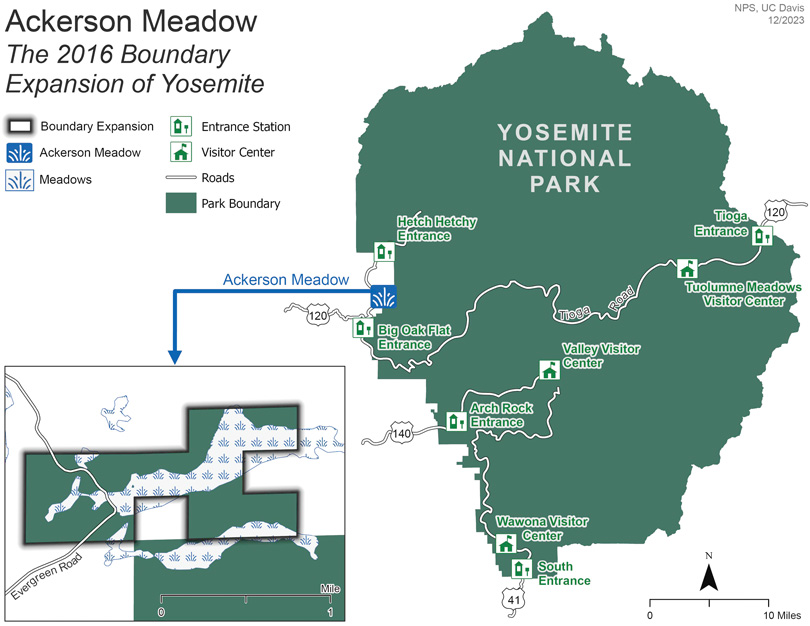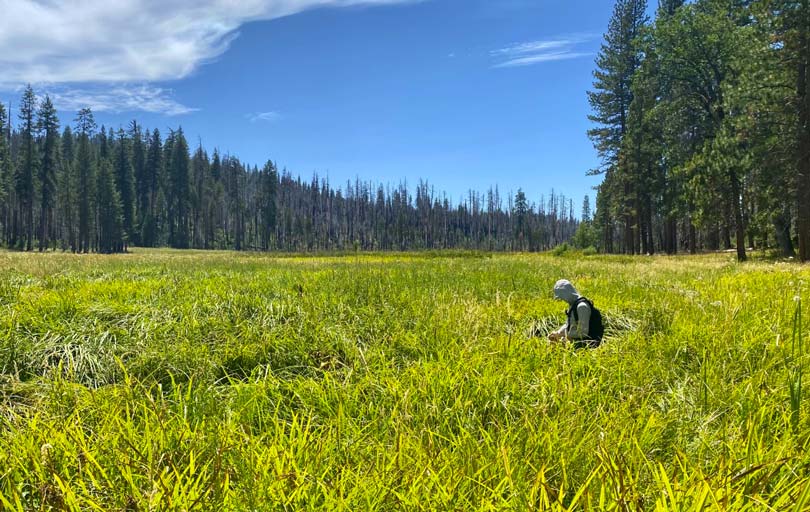
Back in 2011, one of the largest mid-elevation meadows in the Sierra Nevada was under the threat of development. Through hard work by several organizations and an early investment from the Sierra Nevada Conservancy (SNC), however, Ackerson Meadow is now forever protected as part of Yosemite National Park and the site of the most ambitious meadow restoration project in the region.
Seizing a golden conservation opportunity, with a little help from SNC
“It was incredibly fortuitous when the private landowner expressed interest in selling the property with the possibility of permanently protecting it,” said Matt Freitas, Director, California Headwaters Conservation for American Rivers, the nonprofit that spearheaded the due diligence behind the purchase. “American Rivers and our partners seized the opportunity and with the support of the SNC, completed the initial steps to acquire the property.”
While a small portion of lower Ackerson Meadow has been managed by Stanislaus National Forest, the upper 400-acre section was privately owned for more than 160 years. Ideally located on the western edge of Yosemite National Park, the property was sought by developers, ranchers, and conservation groups for decades. All attempts by interested parties to purchase the meadow failed until the owners approached American Rivers with an interest in conserving their land.
Under a tight deadline, American Rivers turned to the SNC in 2011 to help fund a land appraisal and environmental assessment. That due diligence facilitated the eventual purchase of Ackerson Meadow by The Trust for Public Land, with help from the Yosemite Conservancy, the National Park Trust, and several other key state and private funders in 2016.
The property was then transferred to Yosemite National Park, making it Yosemite’s largest expansion in 70 years.

An ecologically critical wildlife corridor
“This was Yosemite National Park’s largest expansion in decades. Despite degradation due historic land uses, Ackerson Meadow was unequaled as an ecologically and regionally critical wildlife corridor,” Freitas emphasized. “The acquisition was an immense success and huge conservation win.”
That huge win was not only for the public who now get to visit the scenic area, but for all the flora and fauna that live and thrive there. That includes many state- and federally listed threatened and endangered species, including the Pacific fisher, the Great Gray Owl, the Little Willow Flycatcher (which successfully bred this year in Ackerson Meadow), as well as three California Native Plant Society listed plants.
“Ackerson Meadow is home to at least 60 known bird species and to many special status, threatened, and endangered species,” Freitas emphasized. “These species have utilized and relied on Ackerson Meadow despite its degraded habitat condition. Meadows represent only two or three percent of the Sierra Nevada landscape, but they are outsized in their incredible ecological and hydrological importance.”
The meadow’s incredible importance, as Frietas pointed out, and its deteriorated condition are why the focus immediately turned to restoration efforts after ownership was transferred to Yosemite National Park. Decades of use, including cattle and sheep grazing, left behind massive erosion throughout the meadow.
Fortunately, part of the environmental report the SNC grant funded back in 2011 also paid for a comprehensive habitat assessment. This assessment became the starting point for the Ackerson Meadow Restoration Project, which began in the spring of 2023. While Ackerson Meadow was Yosemite National Park’s largest expansion in decades, this project will be the park’s largest wetland restoration undertaking ever.

The largest meadow restoration in Yosemite, perhaps the Sierra-Nevada
Tim Kuhn, biologist for Yosemite National Park, stressed the magnitude of the task ahead, but added that the partners involved with restoration efforts are ready.
“The mission of the National Park Service is to preserve unimpaired natural and cultural resources and values for the enjoyment, education, and inspiration of this and future generations,” said Kuhn. “Despite the restoration of Ackerson Meadow presenting itself as a hugely complex and monumental project, the collaborative partnership between American Rivers, Stanislaus National Forest, Yosemite Conservancy, and Yosemite National Park is fully up for the task.”
Freitas, who is overseeing project restoration efforts for American Rivers, concurred.
“This restoration effort is perhaps the most ambitious meadow restoration project attempted in the Sierra Nevada and the largest wetland restoration project in Yosemite history. Up to 90 acres of wetland have already been lost and an additional 100 acres of wetlands are imminently threatened. This project will stop excess soil erosion, slow water loss from the meadow system, and reverse habitat conversion,” Freitas said.
Through hard work and critical funding, many of the meadow ecosystems needed for clean water, carbon sequestration, wildlife habitat, and recreation opportunities are being conserved and restored throughout California. Fortunately, for visitors to Yosemite National Park and the many plants and animals that depend on Ackerson Meadow, that now includes one of the largest mid-elevation meadows in the Sierra Nevada.

